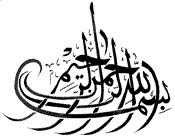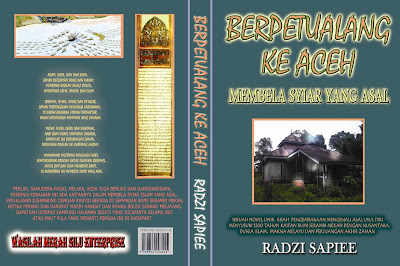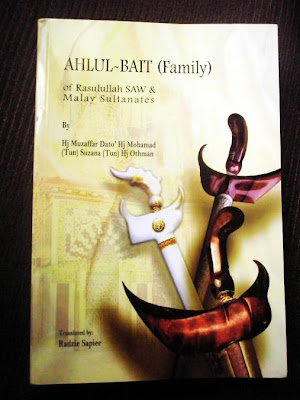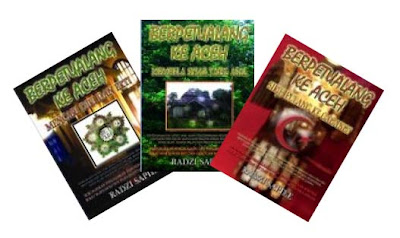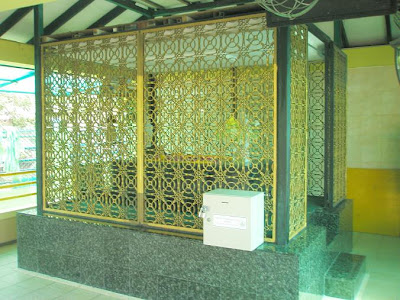Assalamualaikum semua. Sukacita dimaklumkan anak kecil saya Muhammad Al-Aminul Rasyid sudah berumur 3 bulan pada hari ini 13 Januari. Oleh kerana artikel baru ini akan menjadi artikel ke 313 di blogspot ini biar saya mempersembahkannya sekarang walaupun asalnya ia patut dibuat 4 hari lagi. Mari...
Peace be upon you all. It is a pleasure to inform that my young child Muhammad Al-Aminul Rasyid is now 3 months old on this day 13th of January. Since this new article would be the 313th in this blogspot let me present it now although originally it was planned to be made 4 more days from now. Come...
 Lebih kurang 22 km di tenggara bandar Kota Tinggi terletak Kota Johor Lama...
Lebih kurang 22 km di tenggara bandar Kota Tinggi terletak Kota Johor Lama...
Some 22 km south-east of the town of Kota Tinggi lies Kota Johor Lama (the old fort of Johor)...

Ia adalah satu peninggalan sejarah yang penting sehingga dibina satu pusat maklumat...
It is an important historical site such that an information centre was built around...

Terdapat sebuah muzium untuk menceritakan keadaan.
There is a museum to tell the actual condition.
Sedangkan Kota Johor Lama itu sendiri tinggal longgokan-longgokan tanah.
While the Johor old fort itself is left with heaps of soil.
Tersebut di sini bahawa Kota Johor Lama adalah sebuah kota pertahanan yang dibina pada tahun 1540 Masihi oleh Sultan Alauddin Riayat Shah II, pemerintah empayar Johor-Riau 1528-1564. Ketika itu empayar yang mewarisi jajahan takluk Melaka ini sedang hangat berperang dengan Portugis, kuasa penjajah Barat yang berjaya menawan Kota Melaka tahun 1511.
It is said here that the Johor old fort was a defence fort built in the year 1540 AD by Sultan Alauddin Riayat Shah II, ruler of the Johor-Riau empire 1528-1564. At the time the empire which inherited the colonies of Melaka was hotly in war with the Portuguese, the Western colonial force who succeeded in capturing the city of Melaka in the year 1511.

Lihat longgokan-longgokan tanah yang membentuk benteng pertahanan...
Look at the heaps of soil which form the defence fortification...

Pandangan dari hujung sana...
A look from the other end...

Terdapat celah-celah untuk meletakkan meriam...
There are openings for placing cannons...
Ini pula adalah tangga menuruni bukit menghala ke Sungai Johor. Untuk pengetahuan Kota Johor Lama terletak di puncak bukit tepian sungai...
This in turn is a staircase leading downhill towards the river of Johor. For information the old fort of Johor is situated at the top of hill besides the river...

Ini adalah benteng kota dilihat daripada lereng bukit tepian sungai. Dapat dibayangkan bahawa suatu masa dahulu lereng bukit ini sudah diterangkan tanpa pohon, untuk memudahkan pemantauan terhadap apa-apa pergerakan di perairan Sungai Johor. Kota Johor Lama terletak sekitar 14 km dari kuala Sungai Johor. Namun sungainya begitu lebar... di sini sahaja jaraknya sekitar 2.5 km untuk sampai ke seberang sana!
This is the fortification seen from the hillside near the river. One could imagine that once upon a time the hillside was cleared from trees, to make it easy to monitor whatever movement made in the waters of the Johor river. The fort of Johor lama is situated some 14 km from the estuary of the Johor river. Still the river is very wide... around these parts alone it is a distance of 2.5 km to reach the other side!
 Lebih kurang 22 km di tenggara bandar Kota Tinggi terletak Kota Johor Lama...
Lebih kurang 22 km di tenggara bandar Kota Tinggi terletak Kota Johor Lama... Ia adalah satu peninggalan sejarah yang penting sehingga dibina satu pusat maklumat...
Ia adalah satu peninggalan sejarah yang penting sehingga dibina satu pusat maklumat... Terdapat sebuah muzium untuk menceritakan keadaan.
Terdapat sebuah muzium untuk menceritakan keadaan. Sedangkan Kota Johor Lama itu sendiri tinggal longgokan-longgokan tanah.
Sedangkan Kota Johor Lama itu sendiri tinggal longgokan-longgokan tanah. Tersebut di sini bahawa Kota Johor Lama adalah sebuah kota pertahanan yang dibina pada tahun 1540 Masihi oleh Sultan Alauddin Riayat Shah II, pemerintah empayar Johor-Riau 1528-1564. Ketika itu empayar yang mewarisi jajahan takluk Melaka ini sedang hangat berperang dengan Portugis, kuasa penjajah Barat yang berjaya menawan Kota Melaka tahun 1511.
Tersebut di sini bahawa Kota Johor Lama adalah sebuah kota pertahanan yang dibina pada tahun 1540 Masihi oleh Sultan Alauddin Riayat Shah II, pemerintah empayar Johor-Riau 1528-1564. Ketika itu empayar yang mewarisi jajahan takluk Melaka ini sedang hangat berperang dengan Portugis, kuasa penjajah Barat yang berjaya menawan Kota Melaka tahun 1511. Ini pula adalah tangga menuruni bukit menghala ke Sungai Johor. Untuk pengetahuan Kota Johor Lama terletak di puncak bukit tepian sungai...
Ini pula adalah tangga menuruni bukit menghala ke Sungai Johor. Untuk pengetahuan Kota Johor Lama terletak di puncak bukit tepian sungai... Ini adalah benteng kota dilihat daripada lereng bukit tepian sungai. Dapat dibayangkan bahawa suatu masa dahulu lereng bukit ini sudah diterangkan tanpa pohon, untuk memudahkan pemantauan terhadap apa-apa pergerakan di perairan Sungai Johor. Kota Johor Lama terletak sekitar 14 km dari kuala Sungai Johor. Namun sungainya begitu lebar... di sini sahaja jaraknya sekitar 2.5 km untuk sampai ke seberang sana!
Ini adalah benteng kota dilihat daripada lereng bukit tepian sungai. Dapat dibayangkan bahawa suatu masa dahulu lereng bukit ini sudah diterangkan tanpa pohon, untuk memudahkan pemantauan terhadap apa-apa pergerakan di perairan Sungai Johor. Kota Johor Lama terletak sekitar 14 km dari kuala Sungai Johor. Namun sungainya begitu lebar... di sini sahaja jaraknya sekitar 2.5 km untuk sampai ke seberang sana!